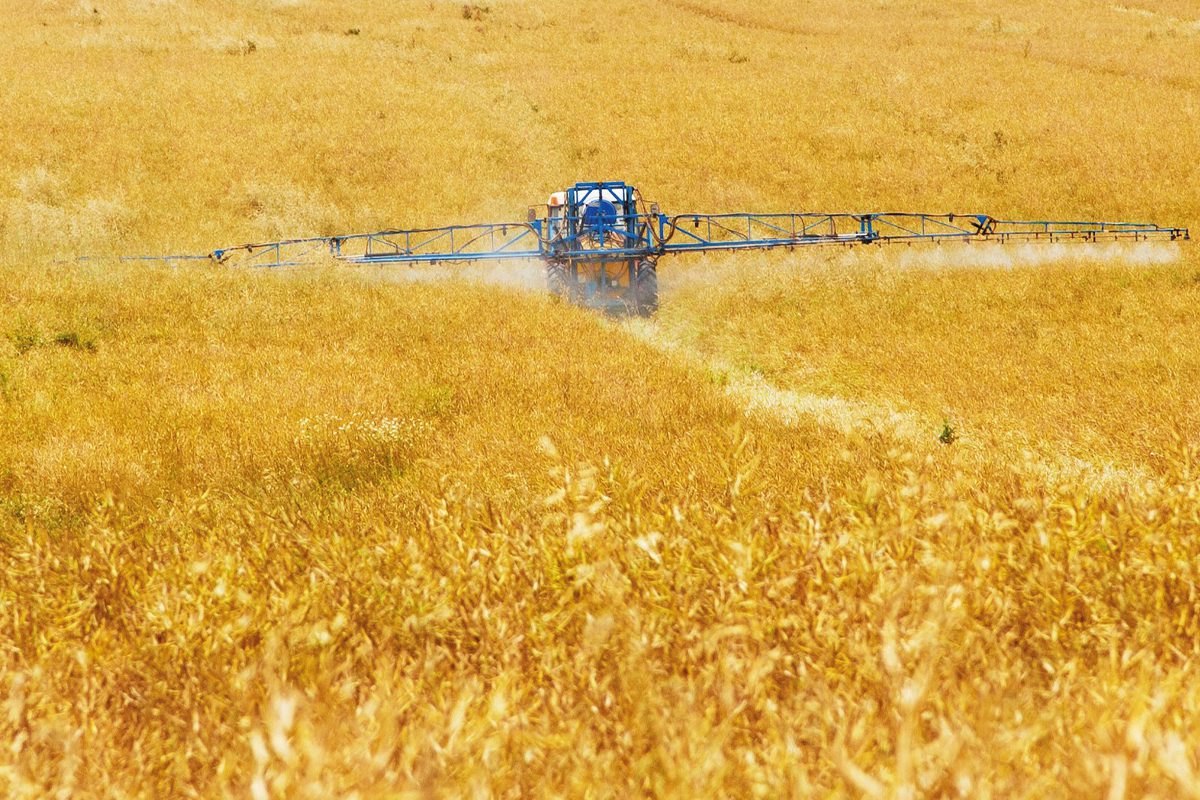Dr Akmez Nabeerasool, senior product manager at industrial water recycling specialist Arvia Technology, discusses advances in the post-treatment purification of water polluted by persistent traces of agrochemicals

Our natural water drainage and usage systems face a multiplicity of challenges. Many fragile river ecosystems are on the point of collapse due to a complex combination of factors including the inadequate treatment of used water routed into them by industry and utilities, destruction of highland porosity, urban development of floodplains and excess water extraction for crop irrigation.
In combination, these factors present a major threat to water quality and availability. A great deal of effort is being directed toward the resolution of these issues.
As intensive farming methods continue to rely heavily on chemicals, the residual amounts of persistent chemicals prevalent in the environment will remain at dangerous levels. The extensive use of insecticides, selective herbicides and germicides for crop protection is regarded as critical to efficient food production. Their use is expected to increase dramatically as the world population rises.
The harsh reality is that agrochemicals can remain in the environment for many years, posing a significant threat to human health.
As aptly stated by the World Health Organisation: “Highly hazardous pesticides (HHPs) may have acute or chronic toxic effects, posing particular risk to children, and are recognized as an issue of global concern. Their widespread use has caused health problems and fatalities in many parts of the world, often as a result of occupational exposure and accidental or intentional poisonings.”
There are further recognised dangers arising from the neglectful extended storage or dumping of excess quantities of agrochemicals, especially into natural watercourses.
The disposal of unused or outdated pesticides comes at a price, which has led some to illegally dump these onto land which leaches into our waterways.
To combat the issue, some utility providers in the UK run free programmes where they accept unused pesticides to protect the environment.
Changing water regulations
Fortunately, as public knowledge of the dangers of these chemicals increases, there is mounting pressure on utilities providers and agrochemical companies to remove them before they enter wastewater or other water bodies. This new awareness of the potential dangers is driving a number of new regulations to be introduced in Europe and around the world.
Limits for the amount of pesticides found in drinking water (UK DWI) are set by DEFRA, who reference the obligation of water companies to ensure that advanced water treatment is used.
This year, the EU regulation for discharging to a water body has been amended. Volatile AOXs (halogenated organic compounds) must fall under a yearly average of < 1mg/L. Many agrochemicals fall into this category.
Treatment challenges
Many agrochemicals are resistant to conventional biological treatment owing to their high toxicity and biological persistence, meaning other technologies must be employed to eradicate dangerous levels from wastewater.
One such development is a relatively new advanced oxidation process (AOP) designed by Arvia Technology, which uses adsorption to localise the problematic chemicals whilst applying a low electrical current to oxidise them. The process has been used to combat a wide variety of organic micropollutants from water which has remained tainted despite conventional processing.
This process makes it possible to meet increasingly rigid compliance standards. In particular, it prevents traces of problematic priority substances from entering water courses. These micropollutants pose an acknowledged threat to our water supply.
Many companies are making efforts to remove agrochemical impurities by using destructive treatment methods.
Currently, lacking the technology to effectively remove specific agrochemicals, many resort to transporting used process water to third party specialists or incineration plants.
Both options are expensive; in short, using an economic and environmental sledgehammer to crack a micropollutant nut.
In the past, eradicating chemicals from wastewater has been achieved by using even more chemicals. However, as technology develops, the treatment of wastewater does not have to be so reliant on these counter-intuitive methods.
One possibility is to combine adsorption with advanced oxidation, the approach taken with Arvia’s Nyex™-a treatment system. It provides a tertiary ‘safety net’, removing agrochemicals down to below the limit of detection in most cases. Trace organics are concentrated on the surface of Arvia’s proprietary non-porous highly conductive media, which is then subjected to an electrical current. This patented adsorbent media allows for targeted and continuous oxidation.
Unlike granular activated carbon, this media is effectively regenerated in-situ and the process can continue without interruption or replacement. Results are achieved without chemical dosing or the generation of sludge, reducing costs in terms of transport of chemicals and specialist waste disposal.
Turning tides
As technology evolves and public knowledge of agrochemicals reaches a fever pitch, there will be no choice but for industry players to reassess their own wastewater treatment processes. Run offs from intensive farming are contributing heavily to dangerous pesticides and insecticides entering our waterways. And inadequate wastewater treatment from various industries is allowing pollutants to get into groundwater, which puts unfair pressure on utilities to remove them.
The potential damage to environment and human health is still not fully understood, but it’s clear that the time to act is now. For real, tangible change to take place, there must be an industry wide effort to both reduce the amount of agrochemicals used, and to make a concerted effort to treat wastewater which contains these contaminants prior to it entering water ways.






